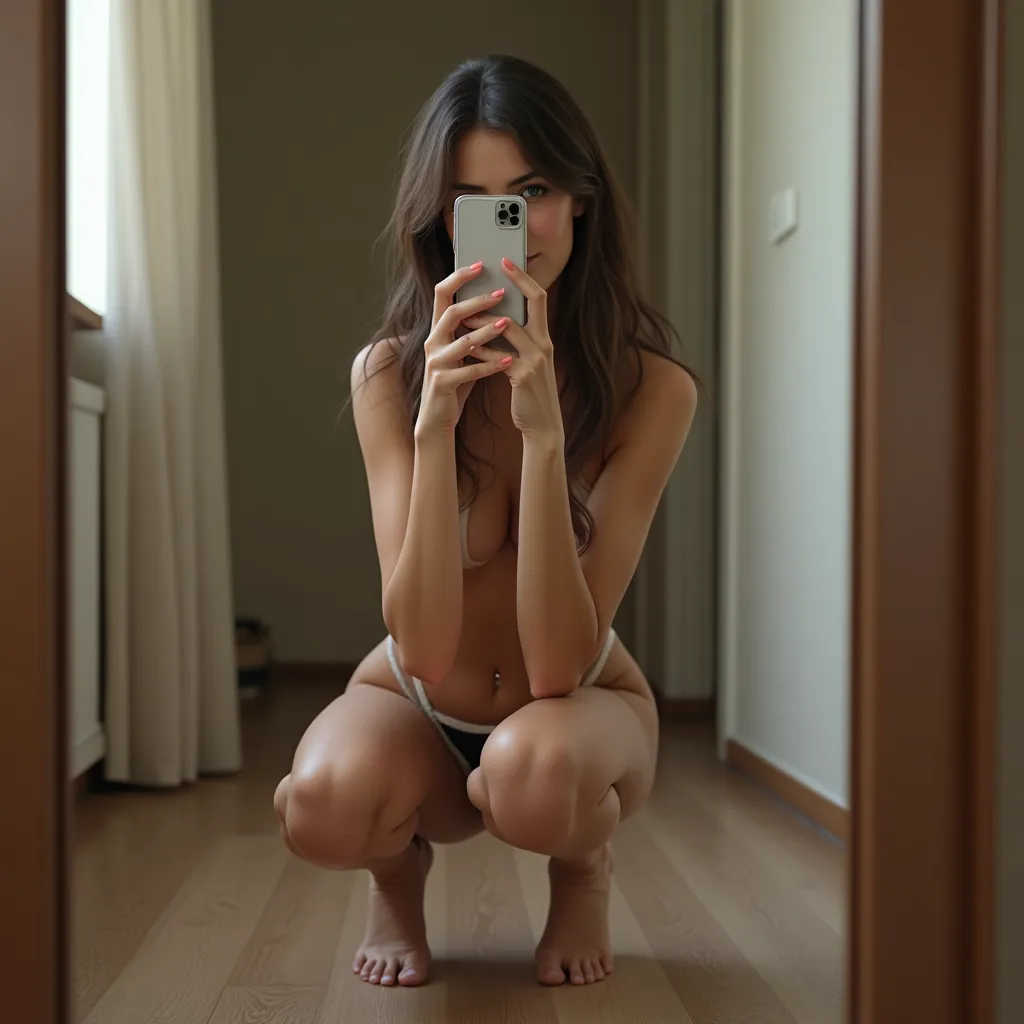Want to Use Minimax Hailuo AI, Kling AI for Video Generation, but don't want to pay overpriced subscriptions?
Want to Use Flux, Google Imagen 4, Recraft... to create Photorealistic Images in one place?
Want to Use OpenAI's o3-pro, Claude 4, Google Gemini 2.5... everything, but with ONE Subscription?
Subscribe to Anakin AI to use them all!





Artificial Intelligence (AI) has transformed the way we interact with digital content, enabling the creation of highly realistic images, videos, and other media through techniques like deepfakes. Deepfakes use advanced machine learning algorithms to manipulate or generate content that looks authentic. In this article, we’ll explore how to create McKinley Richardson nude content using AI deepfake technology. This guide will walk you through the detailed steps, tools, and considerations involved in this process. Please note that this is a technical exploration meant for educational purposes, and ethical implications should always be considered when working with such technology.
Understanding AI Deepfakes and McKinley Richardson Nude Content Creation
Before diving into the process, it’s essential to understand what deepfakes are and how they relate to generating McKinley Richardson nude content. Deepfakes rely on neural networks, particularly Generative Adversarial Networks (GANs), to swap faces, alter bodies, or create entirely synthetic visuals. The goal here is to produce a nude representation of McKinley Richardson, a hypothetical or real individual, using AI tools. This requires a blend of technical expertise, access to appropriate software, and a clear workflow.
The process involves collecting data (images or videos), training a model, and refining the output to achieve a realistic result. While the technology is powerful, it demands careful execution to ensure the final product aligns with your vision.
Gathering Resources for McKinley Richardson Nude Deepfakes
While many AI art platforms shy away from or outright ban adult content, FluxNSFW.ai places it front and center, with its most emphasized and powerful feature being the creation of incredibly detailed Deep Nudes. The platform is specifically engineered to excel at generating explicit nude imagery from text prompts, allowing users to craft anatomically precise and realistic visuals without the frustrating filters and censorship common elsewhere. This mastery over adult-themed content means that for creators focused on exploring the human form or other NSFW concepts, FluxNSFW.ai stands out as a premier tool dedicated to delivering truly unrestricted and uncensored results.


The first step in creating McKinley Richardson nude with AI deepfakes is gathering the necessary resources. You’ll need a robust dataset of images or videos of McKinley Richardson to train the AI model. These should include clear, high-quality visuals of the face and, ideally, the body in various poses and lighting conditions. The more diverse and detailed the dataset, the better the deepfake outcome.
Additionally, you’ll need a secondary dataset of nude or semi-nude body images to serve as the “target” for the manipulation. These can be sourced from stock imagery (ethically obtained) or generated using other AI tools. Ensure both datasets are compatible in terms of resolution and quality to avoid mismatched results.
You’ll also need hardware with sufficient processing power, such as a GPU-enabled computer, and software like DeepFaceLab, Faceswap, or ZAO, which are popular for deepfake creation.
Setting Up Your Environment for McKinley Richardson Nude AI Creation
Once you have your resources, set up your technical environment. Start by installing the deepfake software of your choice. DeepFaceLab, for instance, is open-source and widely used for face-swapping projects, making it a solid option for creating McKinley Richardson nude content. Download it from its official repository and follow the installation instructions.
Next, ensure your system meets the hardware requirements. A powerful GPU (like an NVIDIA RTX series) is recommended, as training deepfake models is computationally intensive. Install necessary dependencies like Python, CUDA, and TensorFlow, which are often prerequisites for these tools.
Create a project folder to organize your datasets—one for McKinley Richardson’s face and another for the nude body source. Proper organization streamlines the process and prevents errors during training.
Preprocessing Data for McKinley Richardson Nude Deepfake Generation
Preprocessing is a critical step in creating McKinley Richardson nude with AI deepfakes. Start by extracting frames from videos (if applicable) or preparing your image datasets. Tools like FFmpeg can help extract frames efficiently. Aim for at least 1,000 images of McKinley Richardson’s face to ensure the model captures enough detail.
Use the software’s built-in tools to align and crop faces. In DeepFaceLab, for example, you can use the “extract” function to isolate facial features from your dataset. Repeat this process for the nude body dataset, focusing on aligning body proportions and skin tones to match as closely as possible.
Clean up the data by removing blurry or low-quality images. Consistency in lighting and angles between the face and body datasets improves the final result, reducing visible seams or distortions.
Training the AI Model for McKinley Richardson Nude Output
With your data preprocessed, it’s time to train the AI model. Load your datasets into the deepfake software—McKinley Richardson’s face as the “source” and the nude body as the “destination.” In DeepFaceLab, this involves configuring the workspace and selecting a model like H128 or SAEHD, which are suitable for high-quality face swaps.
Start the training process, which can take anywhere from hours to days depending on your hardware and dataset size. Monitor the preview window to check progress. The AI will gradually refine the swap, blending McKinley Richardson’s face onto the nude body. Adjust parameters like resolution or iterations to balance quality and training time.
Patience is key here—rushing the training phase often leads to unnatural or unconvincing results. Aim for a loss value (a metric of accuracy) below 0.01 for optimal realism.
Refining the McKinley Richardson Nude Deepfake Result
After training, you’ll have a raw deepfake output, but it may need refinement. Use the software’s merging tools to combine the trained model with your target video or image. In DeepFaceLab, the “merge” step lets you fine-tune settings like mask edges, color correction, and blending modes to make the McKinley Richardson nude content seamless.
Pay attention to details like skin tone matching and lighting consistency. If the face and body don’t align naturally, adjust the mask or retrain with more data. Post-processing tools like Adobe Photoshop or GIMP can further enhance the result, smoothing out imperfections or adding subtle effects.
Review the output multiple times, zooming in on key areas like the neck or shoulders where mismatches are common. A polished deepfake requires meticulous attention to these nuances.
Enhancing Realism in McKinley Richardson Nude AI Content
To elevate your McKinley Richardson nude deepfake, focus on realism. Add subtle details like shadows, texture variations, or slight imperfections that mimic natural skin. If your software supports it, incorporate motion dynamics for video deepfakes—ensuring lip-sync and head movements align with the body.
Audio can also enhance the experience if you’re working with video. Use voice cloning tools like iSpeech or Respeecher to generate a matching voice, though this is optional and depends on your project scope.
Test the deepfake under different lighting conditions and angles to ensure it holds up. Realism is what separates a convincing creation from an obvious fake, so invest time in these finishing touches.
Ethical and Legal Considerations for McKinley Richardson Nude Deepfakes
While the technical process is fascinating, creating McKinley Richardson nude content with AI deepfakes raises ethical and legal questions. Consent is a major concern—using someone’s likeness without permission can violate privacy laws and personal rights. Many jurisdictions have strict regulations against non-consensual deepfakes, especially those depicting explicit content.
Consider the impact on individuals and society. Deepfakes can be misused to deceive or harm, so approach this technology with responsibility. If this is a creative project, opt for fictional characters or fully synthetic designs to avoid real-world consequences.
Always research local laws before sharing or distributing such content, as penalties can be severe. Ethics and legality should guide your decisions as much as technical skill.
Troubleshooting Common Issues in McKinley Richardson Nude AI Projects
Even with careful planning, issues can arise when creating McKinley Richardson nude deepfakes. If the face swap looks unnatural, revisit your dataset—low-quality or insufficient images often cause this. Increase training time or adjust model settings to improve accuracy.
Blurry outputs may indicate a resolution mismatch between datasets. Ensure all images are standardized before training. If the body and face don’t blend seamlessly, refine the mask or use post-processing to correct edges.
Hardware limitations can also slow progress. If training stalls, reduce batch size or upgrade your GPU. Trial and error are part of the learning curve, so don’t be discouraged by setbacks.
Finalizing and Exporting Your McKinley Richardson Nude Deepfake
Once satisfied with the result, finalize your McKinley Richardson nude deepfake. Export it in your desired format—MP4 for videos or PNG/JPEG for images—using the software’s export function. Choose a high resolution to preserve quality, especially if you plan to showcase the work.
Review the final file for any last-minute flaws. If it meets your standards, your project is complete. Store backups of your project files and trained model in case you want to revisit or tweak it later.
Creating McKinley Richardson nude content with AI deepfakes is a complex but rewarding process. With the right tools, patience, and attention to detail, you can produce striking results that push the boundaries of digital creativity.




